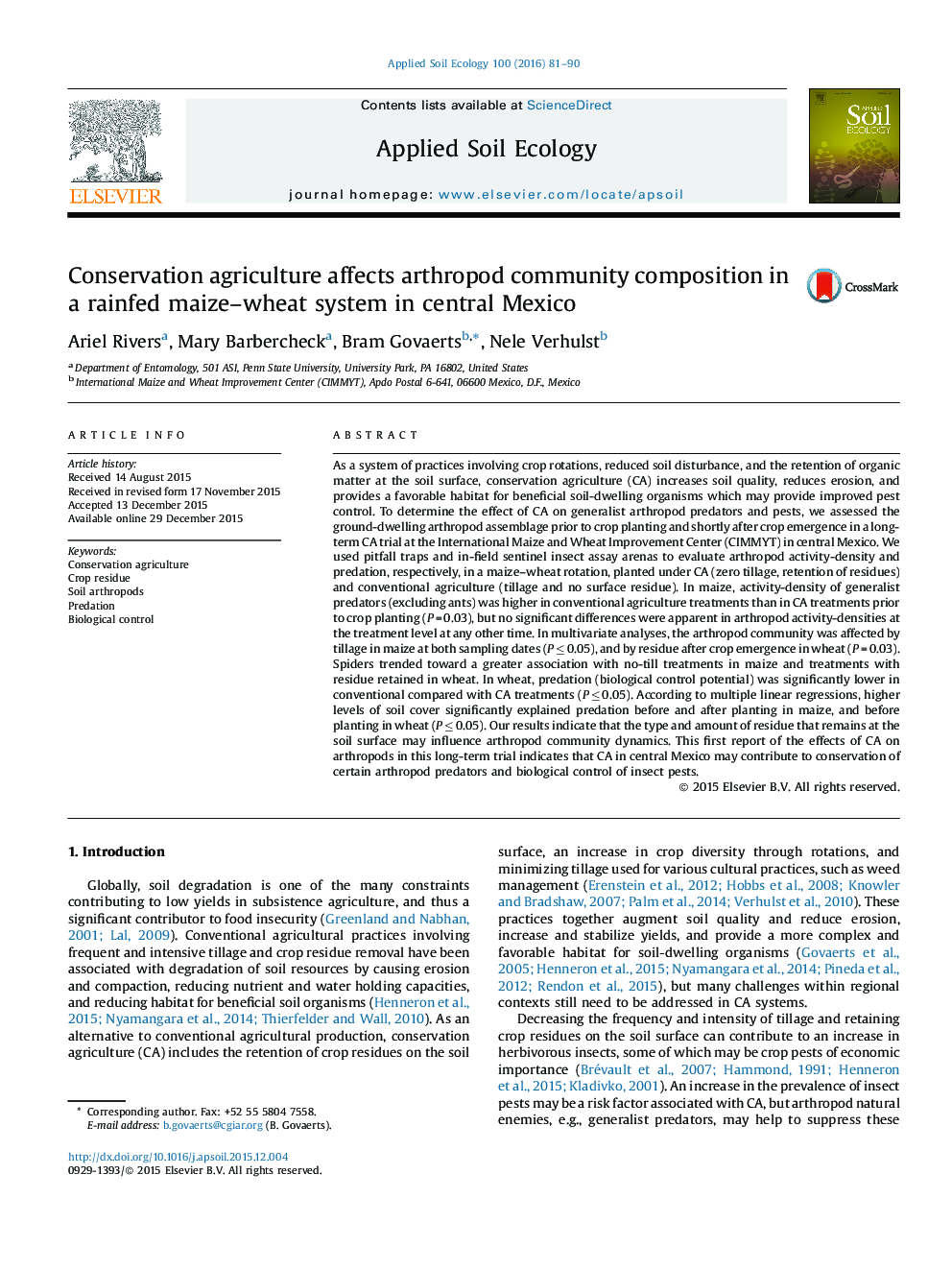| کد مقاله | کد نشریه | سال انتشار | مقاله انگلیسی | نسخه تمام متن |
|---|---|---|---|---|
| 4381804 | 1617783 | 2016 | 10 صفحه PDF | دانلود رایگان |

• A first examination of epigeal arthropods in a long-term trial in central Mexico.
• We compared the effects of tillage and crop residue management in maize and wheat.
• Spiders were favored by no-till in maize, and residue retention in wheat.
• Amount of soil cover drives community dynamics and predation rates in both crops.
• Trends identified at this small scale are promising for Mexican grain producers.
As a system of practices involving crop rotations, reduced soil disturbance, and the retention of organic matter at the soil surface, conservation agriculture (CA) increases soil quality, reduces erosion, and provides a favorable habitat for beneficial soil-dwelling organisms which may provide improved pest control. To determine the effect of CA on generalist arthropod predators and pests, we assessed the ground-dwelling arthropod assemblage prior to crop planting and shortly after crop emergence in a long-term CA trial at the International Maize and Wheat Improvement Center (CIMMYT) in central Mexico. We used pitfall traps and in-field sentinel insect assay arenas to evaluate arthropod activity-density and predation, respectively, in a maize–wheat rotation, planted under CA (zero tillage, retention of residues) and conventional agriculture (tillage and no surface residue). In maize, activity-density of generalist predators (excluding ants) was higher in conventional agriculture treatments than in CA treatments prior to crop planting (P = 0.03), but no significant differences were apparent in arthropod activity-densities at the treatment level at any other time. In multivariate analyses, the arthropod community was affected by tillage in maize at both sampling dates (P ≤ 0.05), and by residue after crop emergence in wheat (P = 0.03). Spiders trended toward a greater association with no-till treatments in maize and treatments with residue retained in wheat. In wheat, predation (biological control potential) was significantly lower in conventional compared with CA treatments (P ≤ 0.05). According to multiple linear regressions, higher levels of soil cover significantly explained predation before and after planting in maize, and before planting in wheat (P ≤ 0.05). Our results indicate that the type and amount of residue that remains at the soil surface may influence arthropod community dynamics. This first report of the effects of CA on arthropods in this long-term trial indicates that CA in central Mexico may contribute to conservation of certain arthropod predators and biological control of insect pests.
Journal: Applied Soil Ecology - Volume 100, April 2016, Pages 81–90